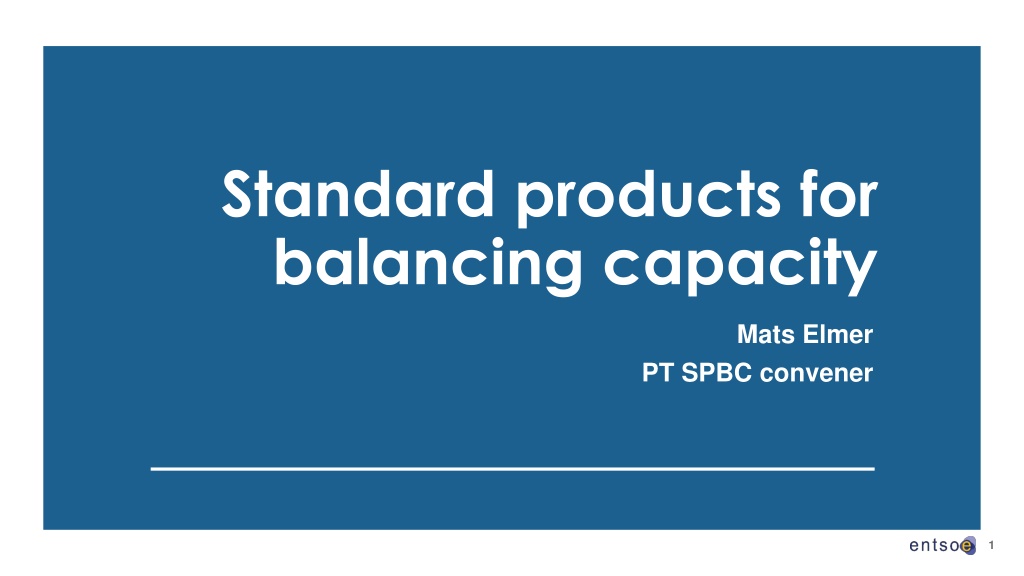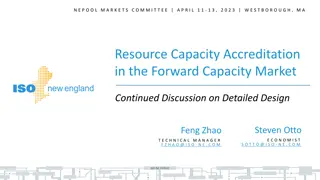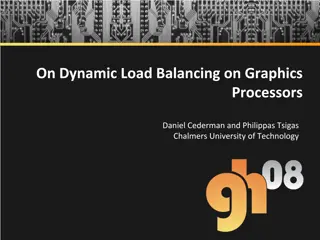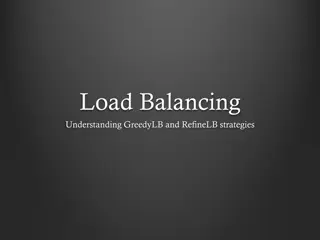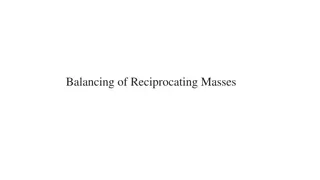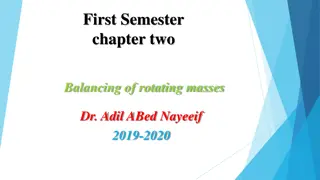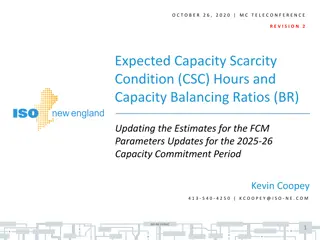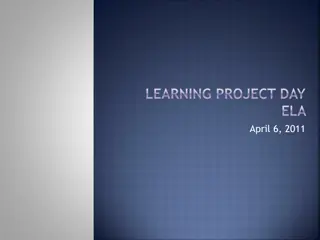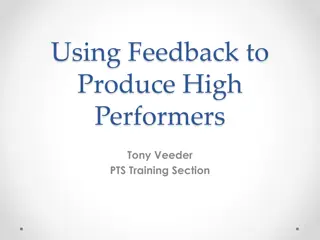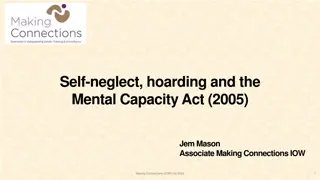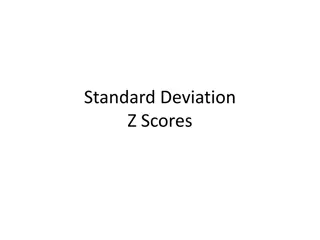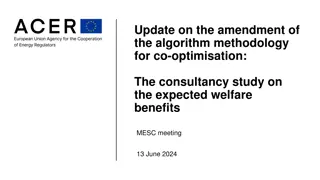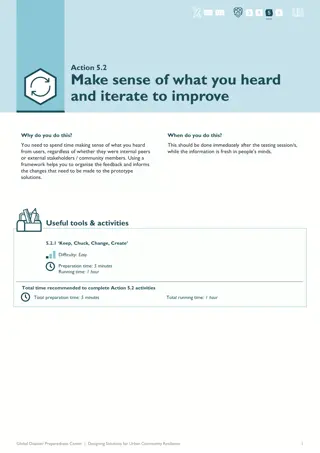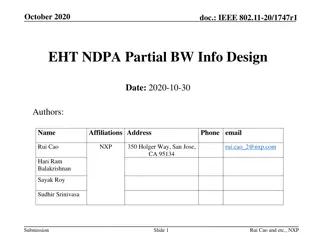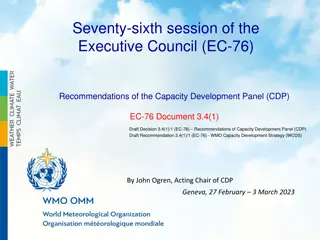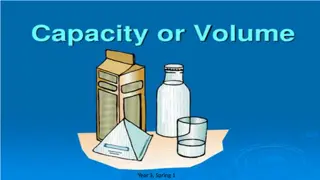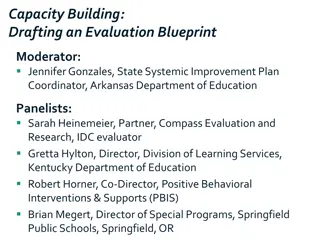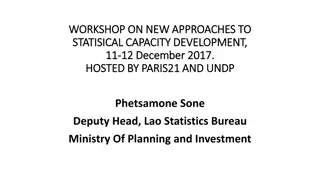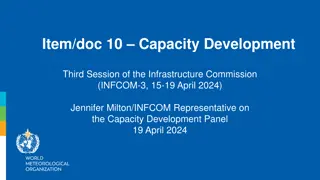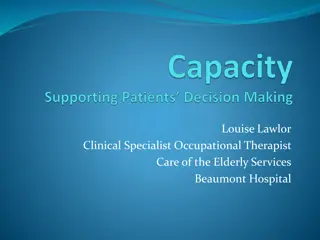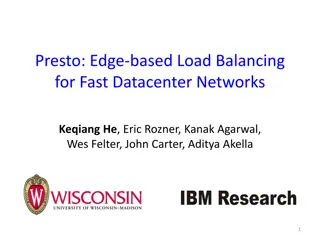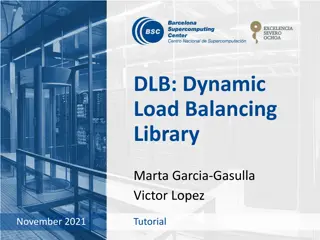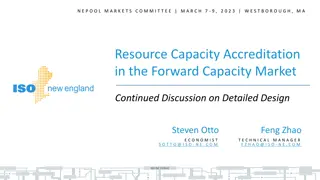Stakeholders Concerns and Feedback on Balancing Capacity Standard Products
General stakeholders' concerns and feedback on standard products for balancing capacity, as outlined in the Mats Elmer PT SPBC convener's proposal, are highlighted. The proposal aims to support a level playing field for balancing capacity cooperation, welcome all technologies, and respect EB.GL requirements. Public consultation feedback includes requests for locational information, investigation into bid linking possibilities, and the definition of characteristics for balancing capacity cooperation. Two alternatives for compiling the list of standard products are discussed, emphasizing the importance of transparency and minimizing restrictions on cross-border market creation.
Uploaded on Sep 27, 2024 | 0 Views
Download Presentation

Please find below an Image/Link to download the presentation.
The content on the website is provided AS IS for your information and personal use only. It may not be sold, licensed, or shared on other websites without obtaining consent from the author. Download presentation by click this link. If you encounter any issues during the download, it is possible that the publisher has removed the file from their server.
E N D
Presentation Transcript
Standard products for balancing capacity Mats Elmer PT SPBC convener 1
General considerations for stakeholders concerns EBGL does not aim to establish one single European market for balancing capacity (BC). Moreover, EBGL is not restrictive on the number of standard products for BC per reserve type. TSOs do not foresee to deviate from those principles as requested by stakeholders at this moment in time. Several balancing capacity cooperations may be established, but no requirements are laid down to shall establish such cooperation. Therefore, the list of mandatory EB GL requirements for BC standard products is shorter (EB GL Art. 25) compared to the list of requirements for standard products for balancing energy. This proposal aims to fulfil the EB GL high-level principles, such that: a) a level playing field per balancing capacity cooperation is supported; b) all technologies are welcome to participate; c) it does not oppose future establishment of regional balancing capacity cooperations including further harmonisation of requirements by means of detailed product/bid designs/requirements that might burden regional cooperations; and d) to respect EB GL requirements of Art. 40, 41, and 42. 2
General stakeholders feedback from public consultation The public consultation took place between 15 May 31 July; 15 responses were received. Main stakeholders concerns/requests were: - - - - locational information: BZ/LFC area shall be sufficient locational information (not unit information) request to TSOs to investigate the possibility of linking bids/exclusive bids investigate possibility of harmonisation of other elements (prequalification, TSO-BSP settlement) define exhaustive list of characteristics that can be defined by balancing capacity cooperation 3
Balancing capacity: one open point There are two alternatives to compile the list of standard products: Specific values for each standard product characteristic Combinations of different specific values (validity period, minimum duration between the end of deactivation period and the following activation and direction) could result in significant number of products (for mFRR standard product). However, such list would increase the transparency. Range of possible values for standard product characteristics (Nordic case) A range would minimise the list of standard products. Some TSOs do not consider a range as fulfilling the requirements for a list of standard products, and consider it may be difficult to establish a cross-border balancing capacity market based on a single product to which different restrictions would apply. On the other hand, TSOs do not want to unnecessarily restrict the possibilities to create balancing cooperations where such existing products would be exchanged or shared. NRAs guidance is therefore requested 4
Nordic (Norway) specific case Norway currently has an mFRR capacity market (RKOM), with seasonal and weekly procurement Two products are defined Product without Restrictions Product with Restrictions The Nordic TSOs have agreed to develop a D-2 mFRR BC market. With a contracting period on 24h, it is relevant to allow BSPs to specify such restrictions. The TSO decides the need procured BC, with or without restrictions. Bids from both products are accepted by the same merit order list, as long as the volume requirements are fulfilled. The restrictions consists of two parts, duration and resting time "Duration" is the maximum number of hours the reserve can be activated continuously in the power regulating market "Resting time" is the minimum number of hours that the reserve cannot be reactivated after an activation in the power regulating market (minimum duration between the end of deactivation and the following activation) Bids submitted according to the product with restrictions can specify Duration as range of integer numbers [h] Resting time as a range of integer numbers [h] Bids with restrictions are payed less, proportionally to the restrictions submitted, in accordance with the terms & conditions. Payment = marginal price x derating factorduration x derating factorresting time The derating factors applies for maximum duration equal to 1-4 hours and resting time equal to 1-8 hours. 5
Example: SPBC list with a range of values mFRR Product #1 #2 #3 #4 #5 #6 #7 Balancing Capacity Validity period 15 minutes 1 hour 4 hours 1 day 1 week The minimum duration between the end of deactivation period and the following activation 0-8 hours 0-8 hours - - 0 0 - Upward or downward Direction 6
Example: SPBC list with specific values #2 (a, b, c, d, e) #1 (a, b, c, d, e) #3 #4 #5 mFRR Product 1 hour 15 minutes 4 hours 1 day 1 week Balancing Capacity Validity period 0h 0h 0h 0 1 h 2 h 4 h 8 h 0 h 1 h 2 h 4 h 8 h The minimum duration between the end of deactivation period and the following activation Direction Upward or downward 7
THANK YOU FOR YOUR ATTENTION www.entsoe.eu
